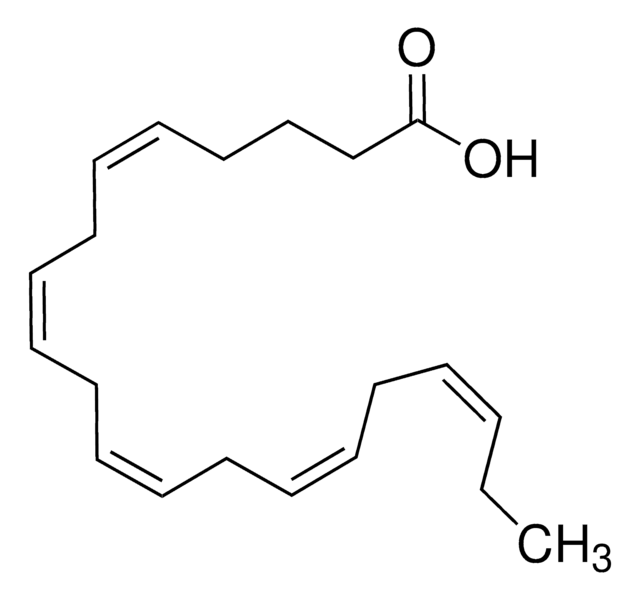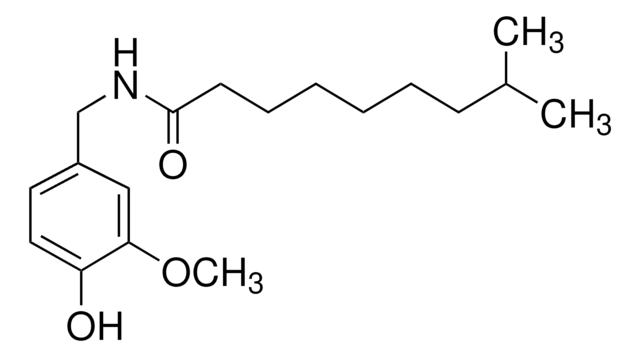Wichtige Dokumente
E6627
cis-5,8,11,14,17-Eicosapentaenoic acid sodium salt
≥99% (capillary GC)
About This Item
Empfohlene Produkte
Biologische Quelle
synthetic (organic)
Qualitätsniveau
Assay
≥99% (capillary GC)
Form
film or powder
Farbe
white to off-white
Löslichkeit
methanol: 50 mg/mL, clear to slightly hazy, colorless to faintly yellow
Versandbedingung
dry ice
Lagertemp.
−20°C
SMILES String
[Na].CC\C=C/C\C=C/C\C=C/C\C=C/C\C=C/CCCC(O)=O
InChI
1S/C20H30O2.Na.H/c1-2-3-4-5-6-7-8-9-10-11-12-13-14-15-16-17-18-19-20(21)22;;/h3-4,6-7,9-10,12-13,15-16H,2,5,8,11,14,17-19H2,1H3,(H,21,22);;/b4-3-,7-6-,10-9-,13-12-,16-15-;;
InChIKey
TVEGTERCKGGVCJ-LIJGWLRISA-N
Angaben zum Gen
human ... ALOX5(240)
mouse ... ALOX5(11689)
rat ... ALOX5(25290)
Suchen Sie nach ähnlichen Produkten? Aufrufen Leitfaden zum Produktvergleich
Allgemeine Beschreibung
Anwendung
- to study its effect on the pathology of lupus in drug-induced and spontaneous mouse models
- to pretreat mouse alveolar macrophages to study the effect/relationship between amiodarone and eicosapentaenoic acid (EPA) concerning the cytokine release
- to examine if pharmacological correction with EPA supplementation might restore autophagic flux and reduce renal lipotoxicity in mice
Biochem./physiol. Wirkung
Lagerklassenschlüssel
11 - Combustible Solids
WGK
WGK 3
Flammpunkt (°F)
Not applicable
Flammpunkt (°C)
Not applicable
Persönliche Schutzausrüstung
Eyeshields, Gloves, type N95 (US)
Hier finden Sie alle aktuellen Versionen:
Besitzen Sie dieses Produkt bereits?
In der Dokumentenbibliothek finden Sie die Dokumentation zu den Produkten, die Sie kürzlich erworben haben.
Kunden haben sich ebenfalls angesehen
Artikel
The potential for the prevention and treatment of cardiovascular disease through increased dietary intake of omega-3 (w-3) fish oils is not a recent scientific discovery.
Unser Team von Wissenschaftlern verfügt über Erfahrung in allen Forschungsbereichen einschließlich Life Science, Materialwissenschaften, chemischer Synthese, Chromatographie, Analytik und vielen mehr..
Setzen Sie sich mit dem technischen Dienst in Verbindung.









